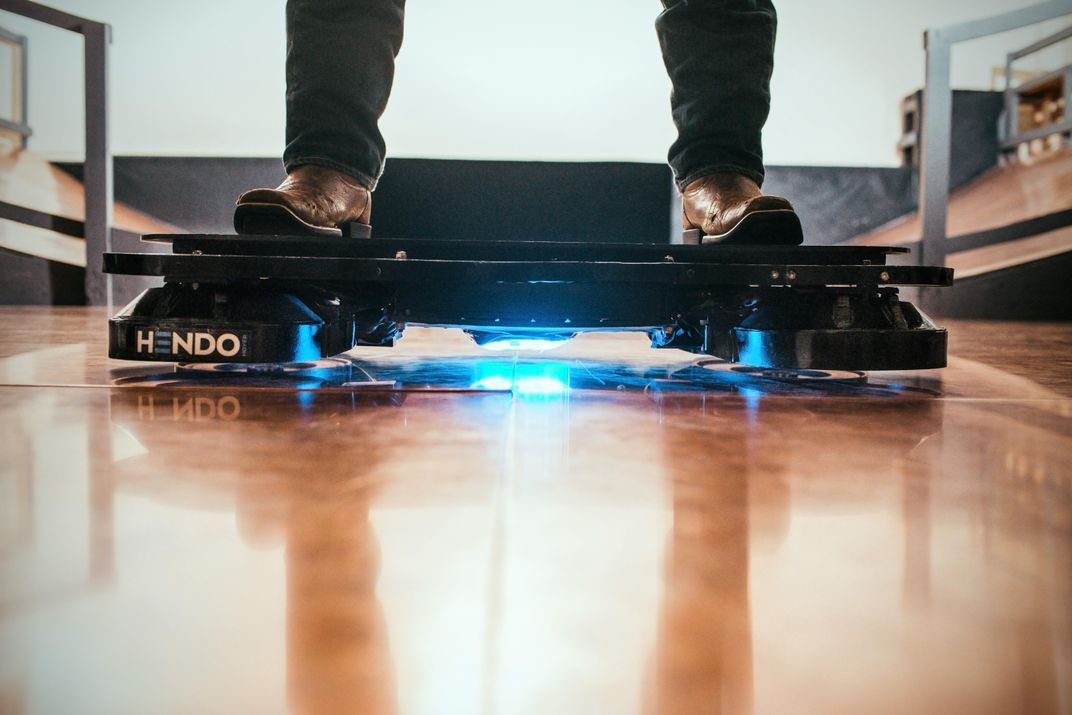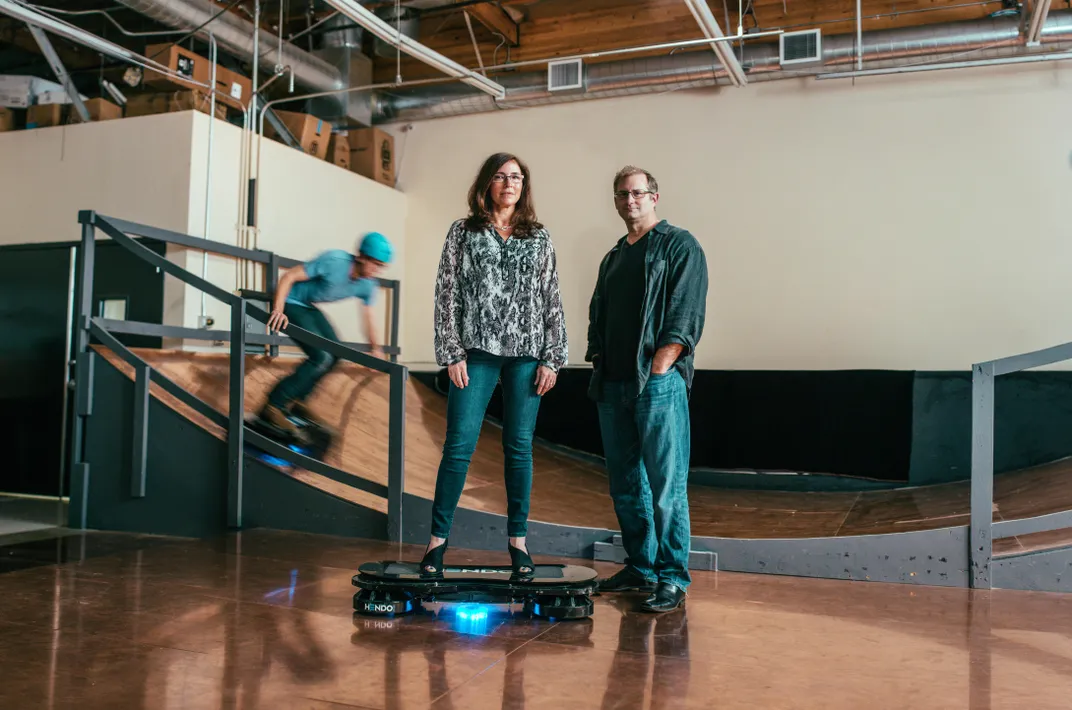The Hoverboard Fantasy Comes True, Just As “Back to the Future” Predicted
Hold onto your flux capacitors; the future is here
On a recent Wednesday afternoon, a guy in blue jeans and a T-shirt drifted back and forth across a gently sloping half-pipe in an office park southwest of San Jose. Instead of skating, though, he was hovering: a real-world Marty McFly, the time-traveling teen who glided on air around Hill Valley in Back to the Future Part II.
The Hendo hoverboard, invented by Greg Henderson and launched with the help of his wife, Jill, nearly broke the Internet when it appeared in a Kickstarter video last year featuring company engineer and resident stuntman Garrett Foshay. A subsequent video starring skateboarding legend Tony Hawk confirmed that the board was real. “That was my first 1080!” Hawk joked, completing almost three spins before tumbling off.
For the millions enthralled by the image of Michael J. Fox as Marty McFly hoverboarding in that far-off time of, yes, 2015, the Hendo fulfills a long-held desire. Compared with the rigmarole of flying—the fuss, the expense, the actual airplane—hovering is a magical little operation: a single rider breaking free from the planet’s pull. It’s “deeply embedded in the public imagination,” says Bob Gale, a writer and producer of the Back to the Future trilogy.
It was something more serious that inspired Greg and Jill, both California natives: San Francisco’s 1989 Loma Prieta earthquake. News images of collapsed homes and pancaked freeways stuck with Greg, a young Army lieutenant stationed in Georgia at the time. After leaving the Army and becoming an architect, he began thinking about a new way to protect cities and save lives: levitating buildings.
With little technical experience but a knack for Internet research, Greg built a prototype. The current model features four “hover engines” with magnets coordinating to generate a concentrated field, which then generates an opposing field in a conductive material below, in the floor. When the two fields repel—lift. (Of course, it’s not simple; tech whizzes at Google X reportedly abandoned their hover research.)
“We made the hoverboard because it’s the perfect way to illustrate our ‘magnetic field architecture’ technology,” Jill said when I met her at the offices of Arx Pax, the company founded to advance their technology. In theory, a building alerted to a coming quake could automatically activate the system; support structures would fall away and the building would float above the trembling ground.
“Give us 30 years, and we’ll hover a skyscraper,” Greg promised. “Or imagine converting HOV lanes into hover lanes. The potential is limitless.”
For now there are challenges. The hoverboard is wobbly and dependent on a copper substrate beneath it, and riders have to be content with about 10 minutes of power. But the Hendersons’ story is, in the end, about getting an invention off the ground. And they predict that a commercial version of the Hendo will come on the market in the next few years. After finishing his latest demo, Foshay powers down the board and steps off. He’s logged many hours at the half-pipe, but the thrill hasn’t worn off: After all, as he says, “I’m the best hoverboard rider in the world right now.”



